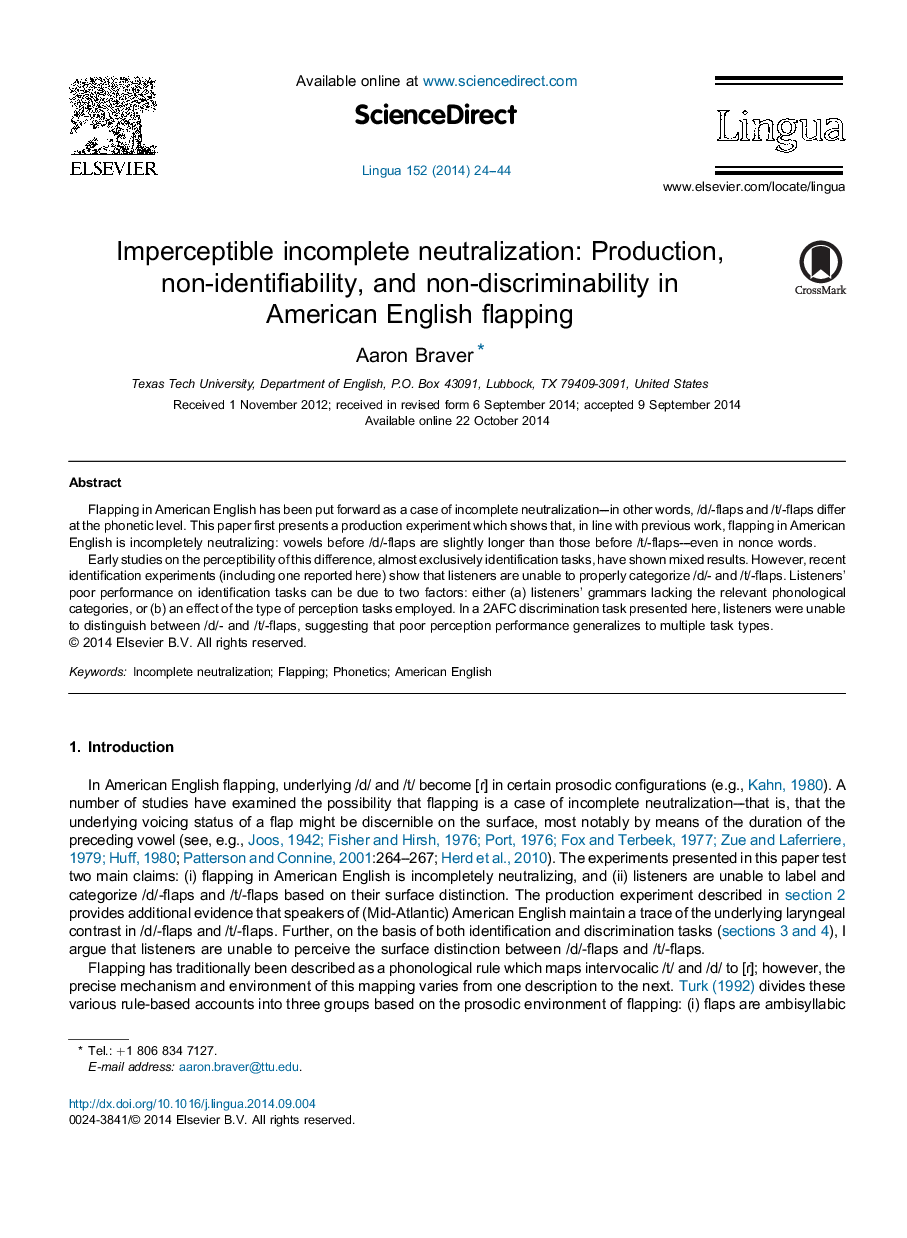| Article ID | Journal | Published Year | Pages | File Type |
|---|---|---|---|---|
| 935392 | Lingua | 2014 | 21 Pages |
•In a production study, vowels before /d/-flaps are shown to be longer than those before /t/-flaps.•Listeners show poor performance on an identification task.•Listeners also show poor performance on a two alternative forced choice (2AFC) task.•Listeners’ poor perception performance is robust across task type.
Flapping in American English has been put forward as a case of incomplete neutralization—in other words, /d/-flaps and /t/-flaps differ at the phonetic level. This paper first presents a production experiment which shows that, in line with previous work, flapping in American English is incompletely neutralizing: vowels before /d/-flaps are slightly longer than those before /t/-flaps—even in nonce words.Early studies on the perceptibility of this difference, almost exclusively identification tasks, have shown mixed results. However, recent identification experiments (including one reported here) show that listeners are unable to properly categorize /d/- and /t/-flaps. Listeners’ poor performance on identification tasks can be due to two factors: either (a) listeners’ grammars lacking the relevant phonological categories, or (b) an effect of the type of perception tasks employed. In a 2AFC discrimination task presented here, listeners were unable to distinguish between /d/- and /t/-flaps, suggesting that poor perception performance generalizes to multiple task types.
